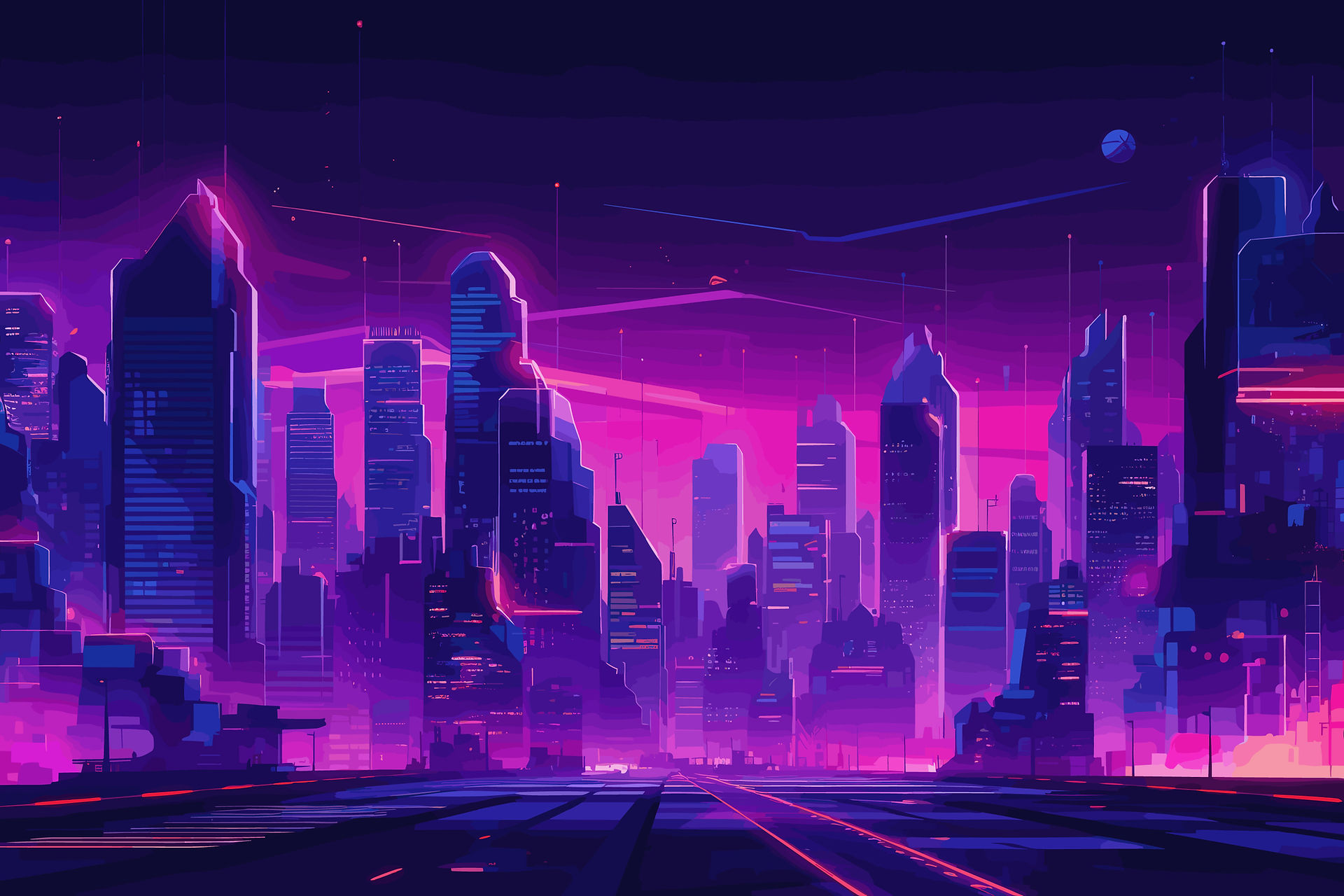Cyberpunk Architecture Outside Asia: Exploring Cities of the Western World
- Mr Richard

- Aug 16
- 4 min read
The cyberpunk aesthetic is often associated with asian cities like Tokyo and Hong Kong, with their neon street lights and dense urban populations. But cyberpunk is not just about glowing skylines and futuristic towers, it also emerges in decaying urban centers, stark inequality, and cities scarred by industrial decline.
From the futuristic high-rises of London to the brutalist architecture of Berlin, or the urban decay of Detroit and São Paulo, different landscapes reflect the genre in unique ways. Cyberpunk lives in the tension between progress and collapse, wealth and poverty, light and shadow. Let’s take a look at some of these cities:
Detroit, USA
Detroit wears its scars in plain sight, and somehow makes them look like art. Towering, empty factories echo a past life, while houses slowly disappear under ivy and time. It’s part ghost town, part urban jungle, and a perfect reminder that in a cyberpunk world, sometimes the corporations leave… and nature moves in without asking.


Berlin, Germany
Berlin doesn’t do “subtle” when it comes to architecture. It goes straight for bold concrete statements. From a car literally swallowed by a monument to office blocks that look like they could launch into orbit, the city wears its brutalism proudly. And then there’s the Mäusebunker, a building so fortress-like it feels ready for the next dystopian uprising.



Mexico City, Mexico
In Mexico City, the class divide isn’t hidden, it’s right there in aerial shots that look like a dystopian movie. On one side, tightly packed rooftops and crumbling walls; on the other, manicured lawns and guarded driveways. Around 10% of the population lives like the elite of a cyberpunk film, while a huge portion still struggles without access to basic services. This sharp contrast is more than economics, it’s a visual and daily reminder of how uneven life can be in the same city.

But if you zoom into the skyline, another story appears. Districts like Santa Fe and Reforma light up at night with neon patterns and glass towers, giving off a distinctly cyberpunk vibe. The glowing skyscrapers and futuristic architecture feel like they belong in a sci-fi blockbuster. A striking counterpoint to the reality just a few streets away.

São Paulo, Brazil
São Paulo is an intense urban mosaic where concrete never seems to sleep. Between overpasses, skyscrapers, and streets that are always packed, the city pulses with a chaotic rhythm straight out of a dystopian setting. The Minhocão, with its worn concrete and heavy structures, exposes the raw side of the metropolis — marked by urban decay and a melancholic, almost cinematic atmosphere.
Yet, in the midst of the chaos, glass towers, neon signs, and bright reflections turn parts of the city into true cyberpunk landscapes. It’s in this contrast that São Paulo finds its identity: brutal and vibrant at the same time.
Left: Paulista Avenue Right: Copan building

London, UK.
London’s night skyline feels like it’s auditioning for multiple genres at once. From sharp glass spires to hulking industrial relics, the city blends modern ambition with fragments of its gritty past. London’s architecture doesn’t just evolve, it experiments, creating a cityscape that feels both futuristic and timeless.
Canary Wharf is pure corporate power in glass and steel, glowing like the city’s financial heartbeat. Its towers rise in clean geometric lines, a perfect backdrop for any cyberpunk boardroom drama.

The Shard is London’s giant crystal, stabbing the sky in style. Standing at over 300 meters, it’s the city’s highest point, and at night, it feels like a beacon for a future that hasn’t arrived yet.

London City Hall’s sleek, tilted curves look like they belong in a sci-fi metropolis. The building’s fluid glass design reflects the Thames and the city lights, making it a futuristic counterpoint to the historic landmarks nearby.

The Tate Modern Switch House looks like it could have been lifted straight from a Blade Runner set. Its striking, angular brick form and layered design give it a futuristic-yet-industrial edge, blending old power station grit with bold modern architecture. It’s the kind of building that feels both grounded in history and beamed in from a sci-fi future.

In the end, cyberpunk is not defined by a single visual style but by contrast, the coexistence of wealth and poverty, progress and decay, light and darkness. Some cities showcase futuristic skylines, while others reveal dystopian decline, yet both embody the essence of the genre. As William Gibson once said, “the future is already here , it’s just not evenly distributed.”







Comments